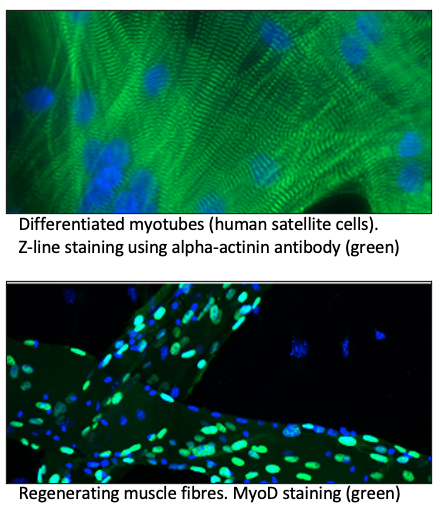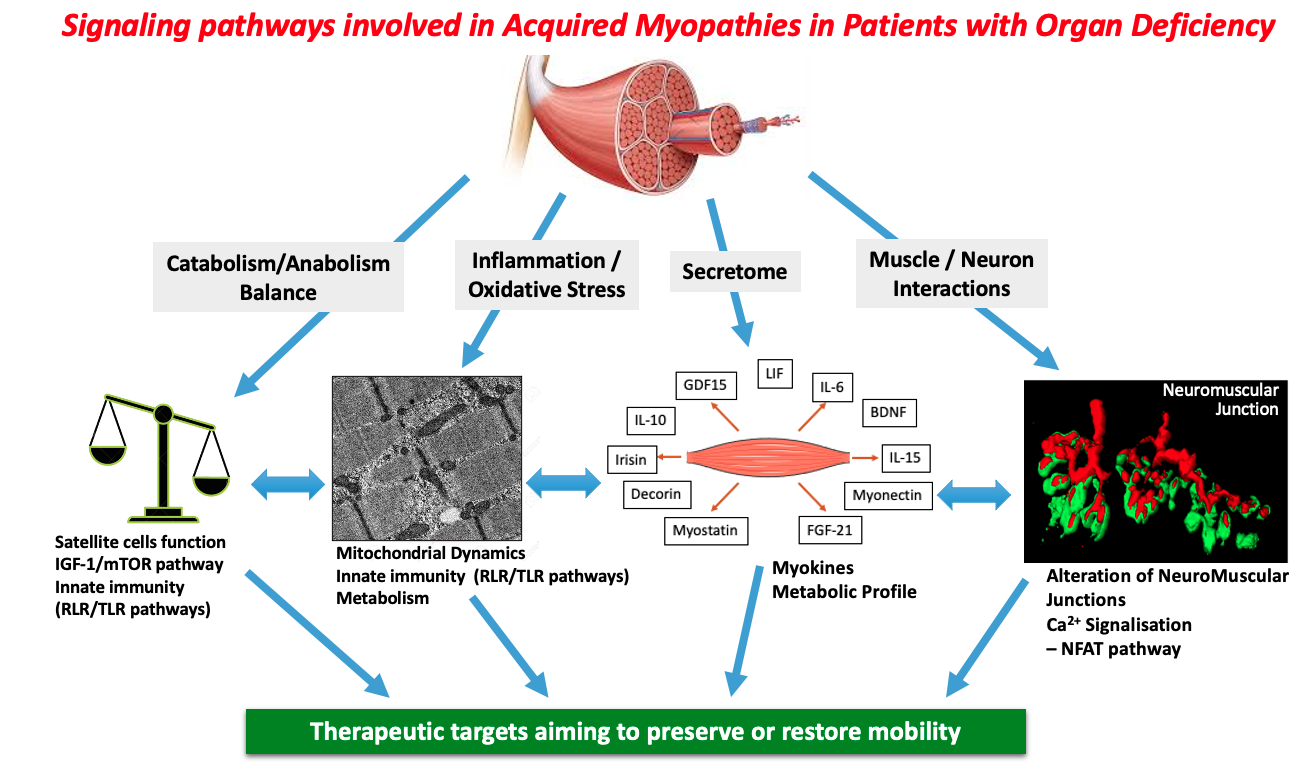Research program : Acquired Myopathies in Patients with Organ Deficiencies
Home > Team 2 > Research program > Axe 3
Molecular and cellular mechanisms of acquired myopathies in patients with organ deficiencies – Therapeutic approaches
This axis focuses specifically on identifying the cellular signaling pathways involved in this acquired myopathy, which may involve mitochondrial dysfunction (Dridi et al, 2020) as well as muscle metabolism (Breuker et al, 2018) and muscle weakness. more or less associated with atrophy.
We hypothesize that this atrophy is linked to a defect in the biological function of muscle stem cells (El Haddad et al, 2017), due to a possible epigenetic signature acquired and induced by the alteration of their microenvironment, related to the functional organ deficit. In this axis, the cellular pathways are specifically evaluated on biopsies from cohorts phenotyped by axis 1 as well as on in vitro muscle models obtained from patient stem cells and developed in axis 2.

The identification of the cellular pathways involved and their interaction with an epigenetic signature will lead us to propose therapies based on biomolecules of interest or non-drug strategies involving exercise and nutrition (Lambert et al, 2018), or functional electrostimulation. These innovative strategies will be tested on animal models at the level of axis 2 before proposing clinical trials at the level of the cohorts followed by our team (De Jong et al, 2013), within axis 1.


